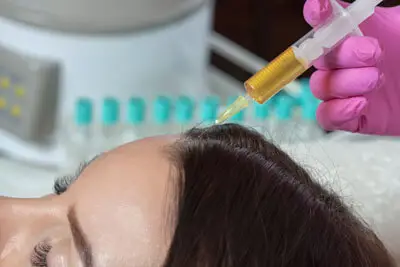| Item | Price | Qty | Total | |
|---|---|---|---|---|
 Loading Cart...
Loading Cart...What RPM do you spin PRP?

The rules for PRP (Platelet Rich Plasma) centrifugation aren't universal for all PRP kits. Spin speed and spin time are determined by the shape and dynamics of the PRP kit being used and how the kit is designed to work.
Centrifugation using the Dr. PRP Kit involves speeds ranging from 2,200 RPM to 3,500 RPM. It can be used as a single or double spin system, depending on what PRP composition (type) your injection requires.
What Is PRP and Why Is It Centrifuged?
PRP is prepared from a sample of a patient’s blood to treat conditions like osteoporosis and hair loss.
A blood sample is centrifuged to separate the PRP from the normal plasma and red blood cells.
The centrifugation process results in platelet Sequestration. Upon retrieving the platelets into a syringe they can be “activated”, causing platelets to release growth factors, which are responsible for PRP’s regenerative effects.
Preparing PRP with the Dr. PRP Kit
With the Dr. PRP Kit, centrifuging is a two-step process.
The 1st centrifugation is done to separate the red blood cells from the plasma and platelets. The sample may be spun at a maximum of 3,400 RPM for 4 minutes.
The PRP centrifuge RPM and time can vary between genders – such as 3,000 RPM at 3 minutes for women, 3,000 RPM at 4 minutes for men. Certain patients—like those who are taking drugs like aspirin or with conditions like anemia—might need a centrifuge of 2,200 RPM at 4 minutes instead.
If the separation results are not as desired, the sample can be corrected and re-spun at 2,200 to 3,500 RPM for another minute or 2. We show you how to do all of this during your in-service training!
After the adjusting knob on the kit is elevated and turned into position to seal the platelets off from the RBCs, the 2nd centrifugation will (typically) be at 3,500 RPM for 2 minutes.
After the centrifuge is finished, the PRP can be removed from the Kit using a 10cc syringe and injected for regenerative medical procedures.
Why Use the Dr. PRP Kit?
Using a Dr. PRP Kit yields a high PRP concentration, control of PRP separation, and high platelet recovery.
PRP preparation with a test tube is not concentrated enough. Test tubes may be sterile but they may not be pyrogen free. The “bloody PRP” that you may make with a centrifuged test tube will likely not have a high enough platelet concentration to yield proper results. A proper kit often raises that concentration to a therapeutic dose.
The Dr. PRP Kit allows you to view the separation of the PRP components in the neck of the Kit, which also means that you can formulate the PRP you want. Additionally, 90% of platelets can be recovered (the percent of captured platelets depend on the kit’s size, shape and dynamic).
What Centrifuges Can Be Used With The Dr. PRP Kit?
PRP centrifuges that can be used for the Dr. PRP Kits include the Centrifuge for PRP With Accessories (CM-7S with Dr. PRP Roter and Bucket) and certain other swing out models with Large Capacity Rotors and Bucket systems.


